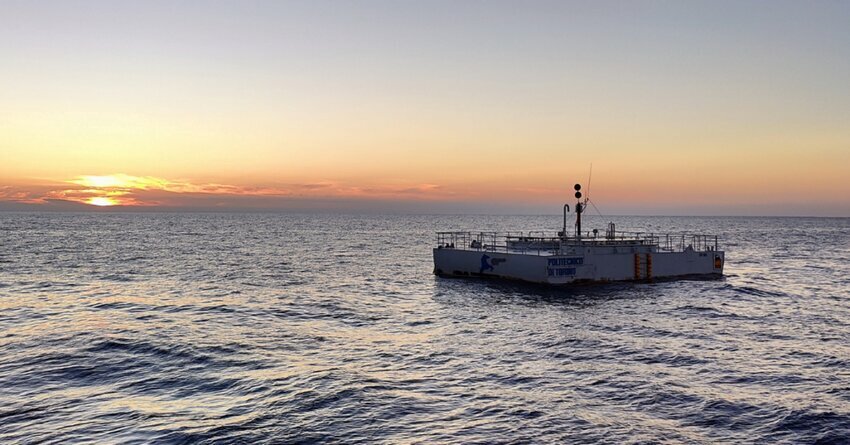 (Credit: Eni)
(Credit: Eni)Eni, in collaboration with Politecnico di Torino and Wave for Energy, has successfully installed the world's first Inertial Sea Wave Energy Converter (ISWEC) device connected to an island's electricity grid. The device is located about 800 meters off the coast of Pantelleria Island and can generate up to 260 kilowatts of peak power converted from wave energy. The experiment, carried out under real operating conditions, will provide useful data for the development of the second-generation device.
The ISWEC technology converts wave motion into electricity, which can power offshore infrastructure, small off-grid islands, and coastal communities. The system is designed to optimize the metocean conditions of the site where it is installed using a genetic algorithm that leverages the significant computing power of Eni’s Green Data Centre.
The machine comprises a steel hull that houses the energy conversion system, consisting of two gyroscopic units each more than 2m in diameter. It is held in place in a 35m deep seabed by a special mooring system consisting of three mooring lines and a rotating joint. The electricity generated is transmitted ashore via an underwater electric cable.
Wave power is one of the most significant untapped renewable energy sources, given that 70% of the Earth's surface is covered by water, 97% of which is composed of seas and oceans. Global estimates suggest that sea waves could generate around 2 terawatts of power, equivalent to 18,000 terawatt-hours annually, almost equal to the planet’s entire demand for electricity. Wave power is more predictable, and constant, and has a higher energy density than solar or wind power, as it is available both day and night. Furthermore, ISWEC technology has a minimal impact on the landscape, as it stands only one meter above seawater. It can be integrated with other offshore renewable energy production systems such as wind power generators, enhancing the value of connection systems and maximizing the conversion of available energy.
Last year, the US Department of Energy awarded $25 million in funding to support increased research, development, and demonstration of technologies that harness wave power to create electricity.
According to a 2019 study published by the National Renewable Energy Laboratory (NREL), across 50 states, the combined technical resource of marine energy is approximately 2,300 TWh/yr, which is equivalent to 57% of the electricity produced by these states in 2019. Moreover, the Pacific and Caribbean territories, along with the freely associated states, offer an additional 4,100 TWh/yr of ocean thermal energy resource. It is noteworthy that we are not projecting the deployment of marine energy technologies in the future, but it is crucial to acknowledge that even if a small fraction of the potential technical resource is harnessed, marine energy technologies would make a significant contribution to satisfy the energy demands of our nation.
The installation of the ISWEC device on Pantelleria Island marks the first step towards its decarbonization and is in line with the energy transition agenda. The ISWEC technology is part of Eni's decarbonization plan and is recognized by the EU Commission as a key example of sea wave energy conversion.